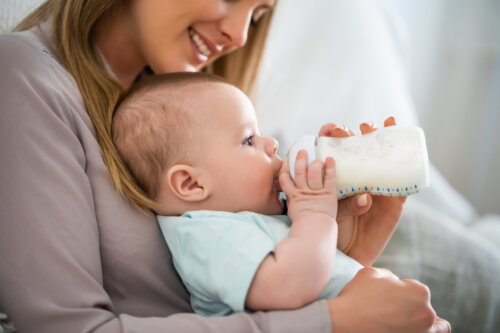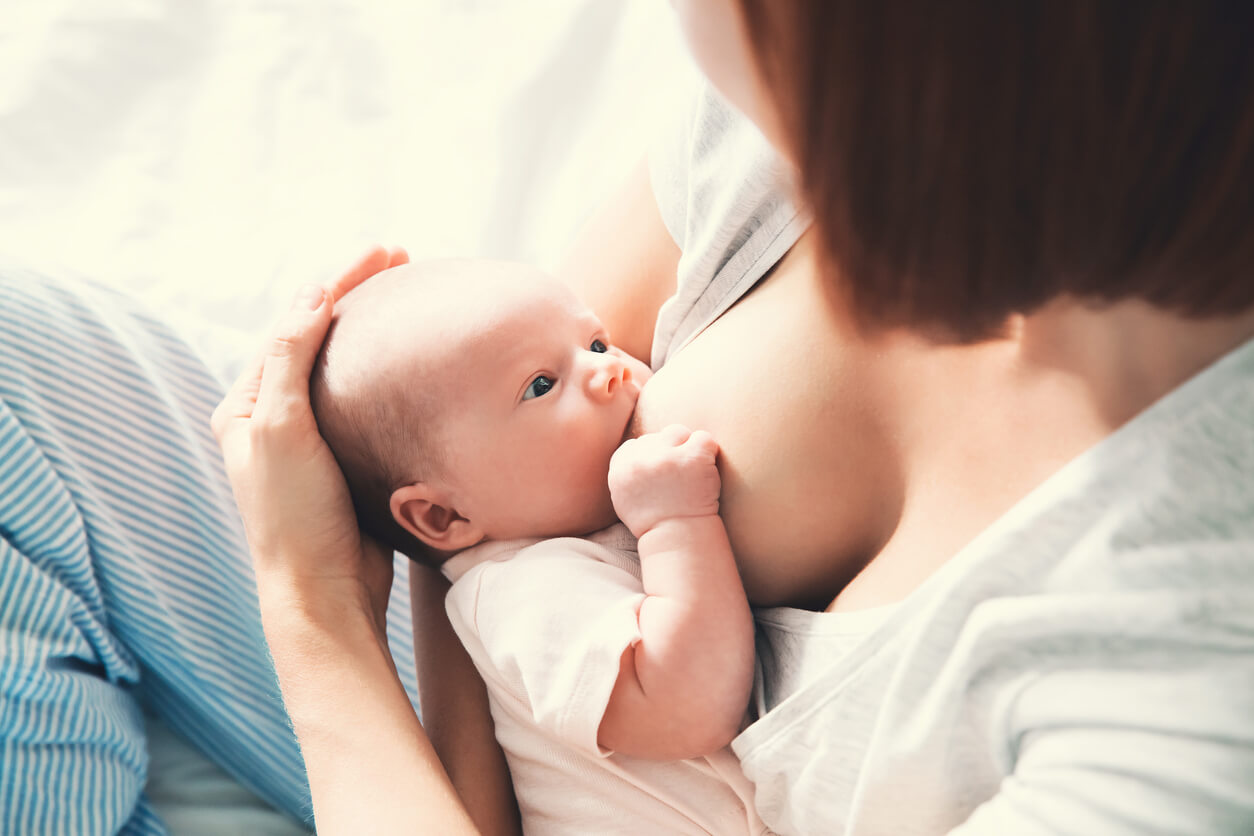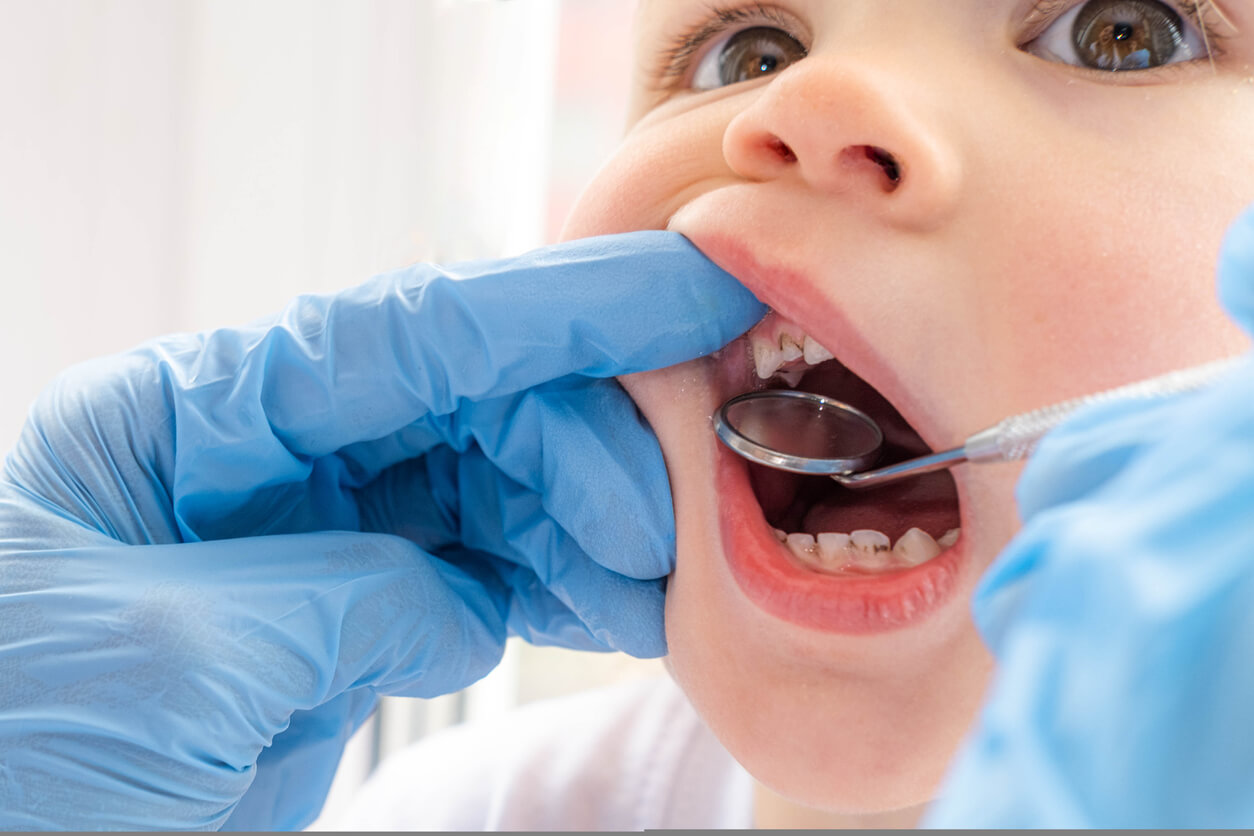How Long Can Babies Bottle Feed Without Affecting Their Development and Oral Health?
If babies bottle feed beyond a certain age, it can have harmful effects on oral health. We'll tell you about it in the following article.

When breastfeeding isn’t an option, artificial feeding becomes a fundamental tool for the nutrition of the newborn. Up to a certain age, babies can drink from a bottle without this affecting their oral health, but if babies bottle feed for too long, there may be negative consequences.
Up to six months of life, the recommendation of the World Health Organization (WHO) and other agencies is exclusive breastfeeding. After that, breastfeeding should be continued with other foods to supplement nutrition up to 2 years of age or beyond, if the mother and child so desire. But these recommendations aren’t the same if artificial feeding is chosen. In this case, prolonging the use of a bottle until the age of 2 can interfere with the normal development of the oral cavity and generate problems. We’ll tell you more about this.
The development of the baby’s mouth
To better understand why the age that babies should stop using a bottle to take care of their oral health isn’t the same as the estimated age for breastfeeding, it’s important to understand how the mouth develops. When sucking, the baby makes movements with its jaw and tongue that differ depending on how it feeds.
Breastfeeding favors oral and dental development

With breastfeeding, babies make milking movements to obtain their food. This effort favors oral and dental development and thus reduces the risk of suffering from malocclusions in the future. During breastfeeding, the back of the tongue and the baby’s hard palate grasp the nipple, while the lips close the mouth tightly. This creates a vacuum which, together with the anteroposterior movements of the jaw, allows the milk flow to escape. The tongue adopts the shape of a spoon and slides the milk backward to be swallowed.
These movements favor the strengthening of the muscles, the growth and advancement of the jaw, and the harmonious development of all the orofacial structures. However, this doesn’t happen when the baby is fed with a bottle.
What happens when babies breastfeed
When using a bottle, the food easily reaches the mouth and the child only has to swallow. Therefore, the jaw movements are much weaker, the lip closure isn’t as forceful, and the tongue position remains flat. Less exercise of the oral musculature can lead to less muscle tone. With this, bone and cartilage growth isn’t harmonious and the lower jaw may remain in the posterior position with which babies are born.
For this reason, if the child uses a bottle, it’s ideal to remove it before 12 months of age. In addition, it’s advisable to choose bottles with anatomical teats and small holes. This breast-like design favors anterior jaw movement and the coordination of sucking, swallowing, and breathing.
Beware of baby bottle tooth decay!
Another aspect to take into account if you choose to bottle-feed your baby is the risk of developing cavities in the teeth that are just starting to appear. As soon as the first elements erupt, they can get sick if they’re not properly cared for. Baby bottle or early childhood cavities are an aggressive and rapidly advancing form of the disease that affects baby teeth.
Without proper oral hygiene, bacteria take advantage of the sweet substance and produce acids that destroy tooth tissues early on. To reduce the risk of tooth decay, it’s best to prevent the child from falling asleep with the bottle in their mouth. It is also important not to add juice or sweeten the contents of the bottle and make sure to clean their mouth and gums well, especially after night-time feedings.

At what age should the bottle be removed to take care of the child’s oral health?
The bottle should be removed, ideally, between 12 and 18 months of age. To avoid malocclusion problems and alterations in the mouth, its use shouldn’t be prolonged beyond 2 years of age. It’s best to start gradually withdrawing the bottle after the baby is 6 months old when complementary feeding begins. From this moment on, the baby starts to become familiar with the feeding utensils. Offering milk and water in a training glass or cup is a good strategy to avoid using the bottle so much.
From 18 months onwards, chewing is already more efficient, and swallowing solid foods is usually well incorporated. Ideally, at this age, the bottle should no longer be used. Even the persistence of the bottle may favor the installation of an infant-sucking pattern. Keep in mind that atypical swallowing causes problems with biting and speaking and interferes with the correct development of the structures of the face and mouth.
Withdraw the bottle gradually
In addition to the disadvantages mentioned above, maintaining the habit of bottle-feeding the child can also cause nutritional problems. If the child expects to have a bottle whenever they want it, they may refuse to try new foods. They may also have difficulty chewing and suffer from deficiencies that affect their growth.
Finally, remember that it’s important that the withdrawal of the bottle is gradual and respectful. Stopping the bottle as soon as possible will allow your child to reach the age limit without any difficulties and will avoid several problems in the future.

